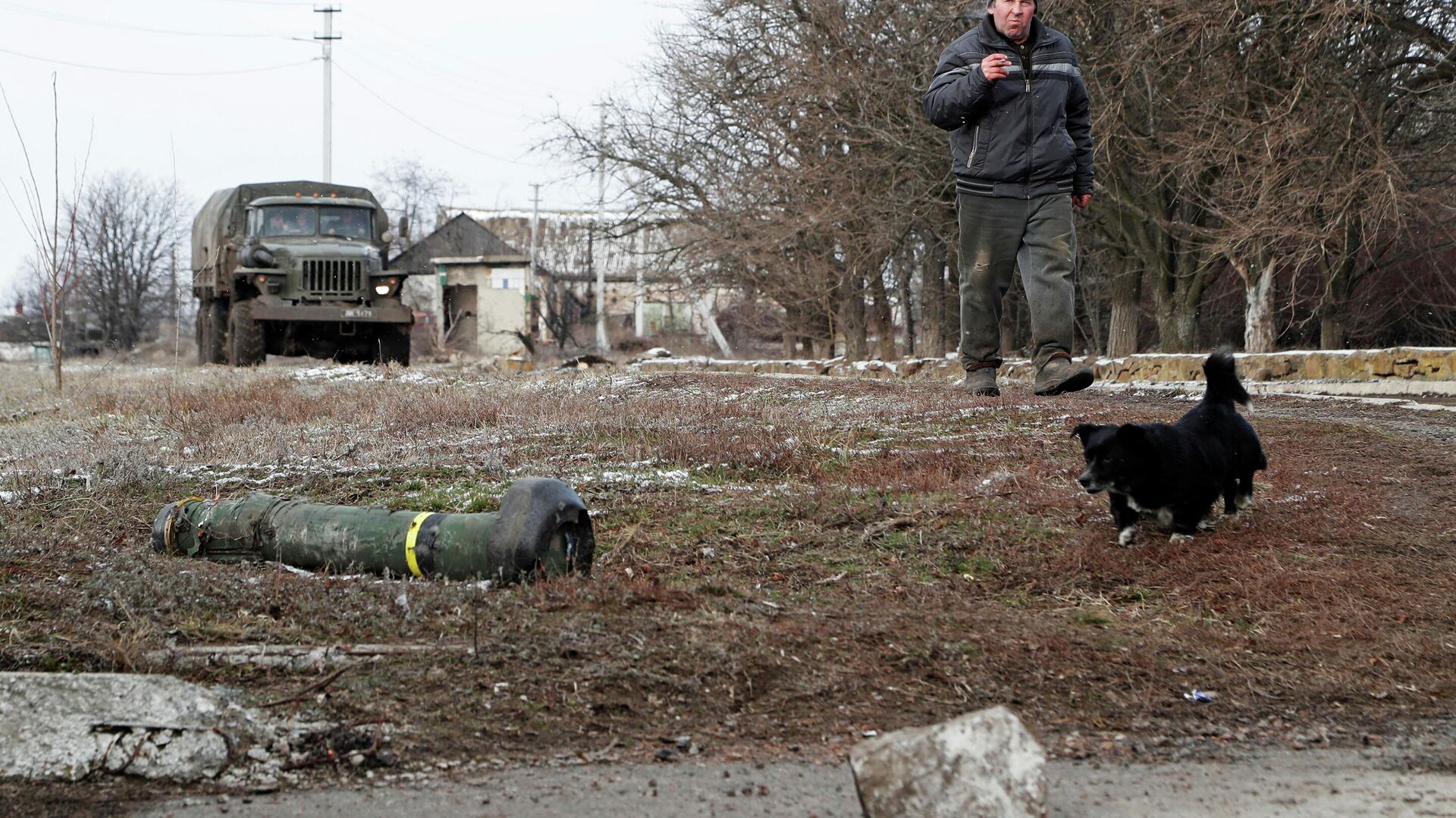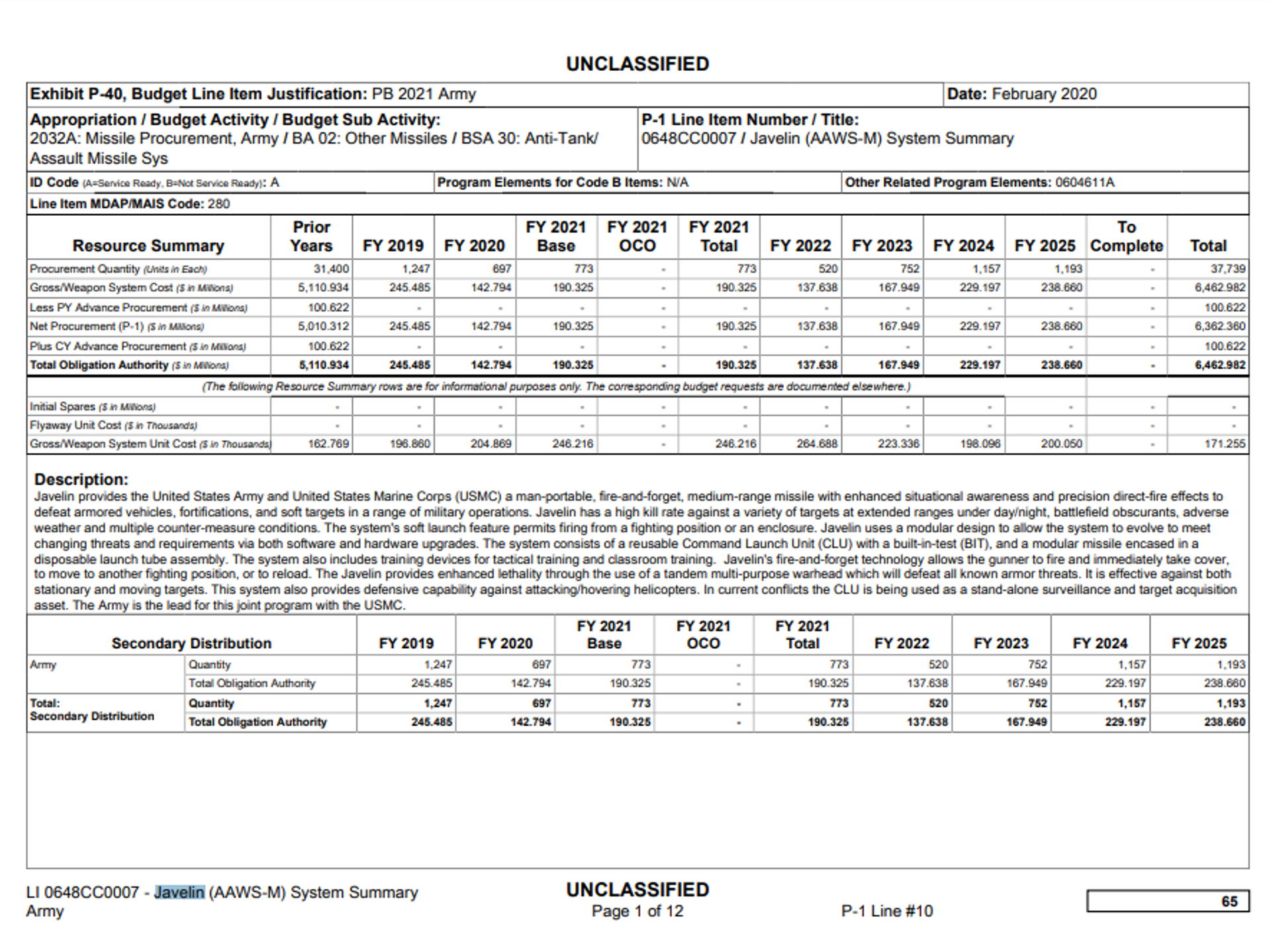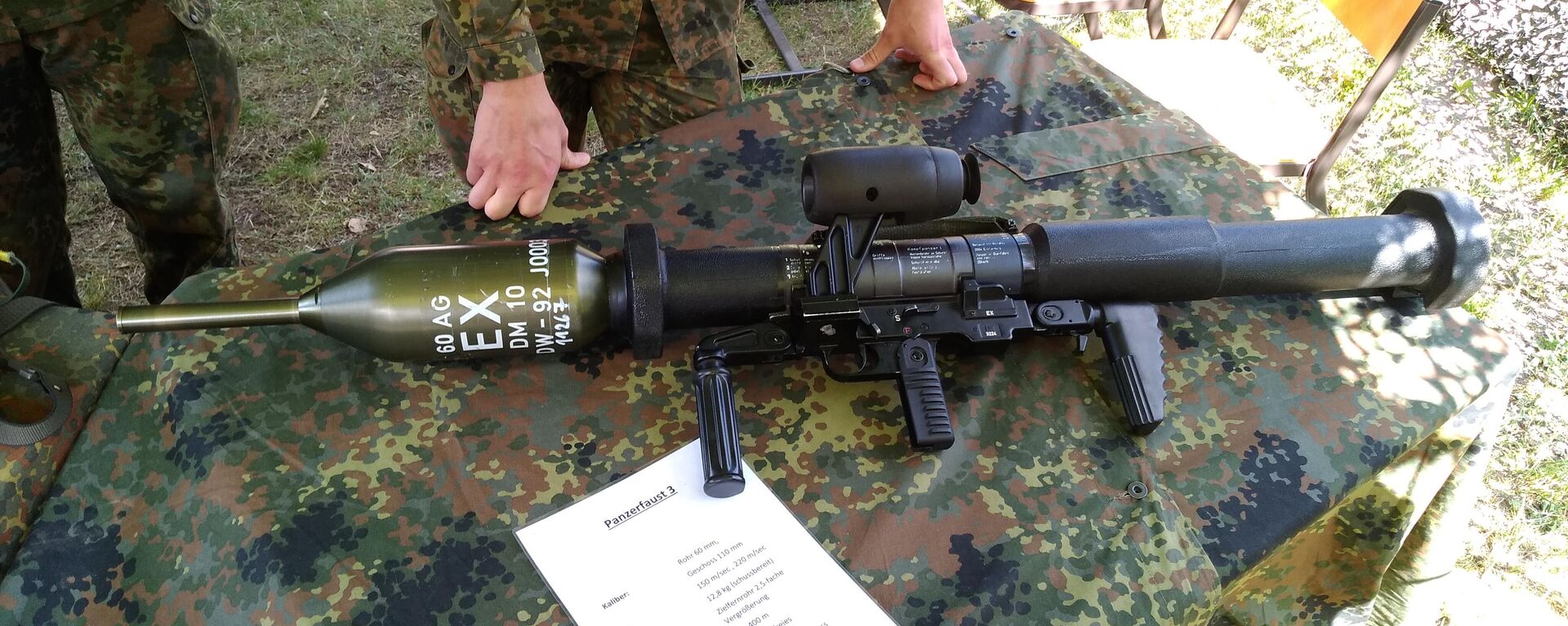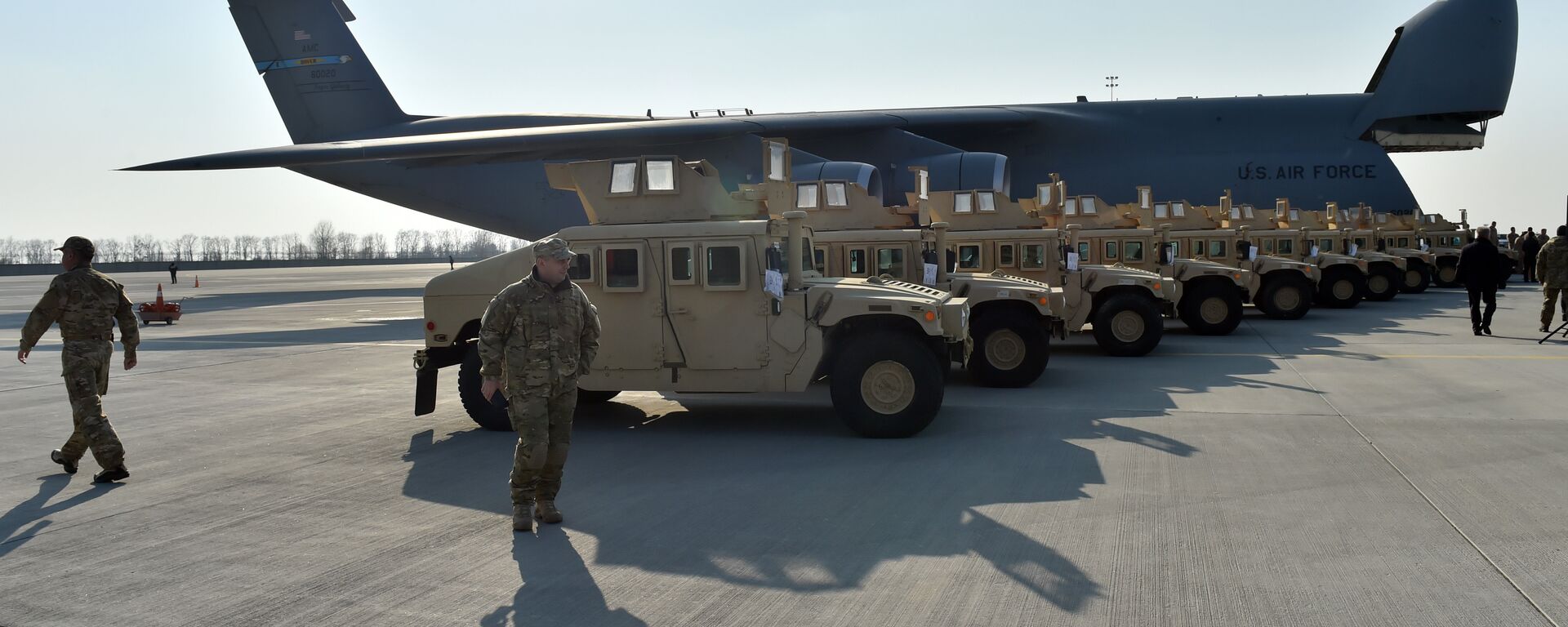US Running Out of Javelin Anti-Tank Missiles to Send to Ukraine: Report
18:30 GMT 18.04.2022 (Updated: 18:37 GMT 18.04.2022)

© REUTERS / ALEXANDER ERMOCHENKO / A local resident walks past a destroyed Javelin missile system in the separatist-controlled village of Anadol during Ukraine-Russia conflict in the Donetsk region
Subscribe
The United States and its allies have sent up to 17,000 anti-tank weapons to Ukraine over the past month-and-a-half, ranging from old Soviet-era inventory cluttering up NATO stockpiles, to FGM-148 Javelins, the advanced US portable anti-tank missile system which made its combat debut after the US invasions of Afghanistan and Iraq.
Having transferred about a third of its inventory of Javelin missile systems to Ukraine, the Pentagon may be running out of stocks critical for the security of the homeland and possible US wars abroad, Center for Strategic and International Studies researcher Mark Cancian has calculated.
In a press release put out earlier this month, the Pentagon announced that it had committed over 5,000 Javelins to Ukraine.
The US military does not publicise its inventory of the anti-armour missile system at any given time. However, according to an unclassified DoD summary of the missile systems’ production, some 37,739 Javelins were produced over the past quarter century since Raytheon and Lockheed Martin began churning them out in 1996.

DoD summary of Javelin production.
© Photo : US Department of Defense
2,717 Javelins were delivered to the US military between 2019 and 2021. The Pentagon has projected the production of 3,622 more between 2022 and 2025. The missiles have a per-unit price tag of between $216,700 and $249,700, depending on modification.
Cancian estimates that when accounting for missiles expended in US forces’ training and testing, the US military probably had about 20,000-25,000 Javelins in its inventory before the Ukraine deliveries, which cut that number by at least one third.
“That fraction doesn’t sound like much; after all, two-thirds of the inventory remains. However military planners are likely getting nervous. The United States maintains stocks for a variety of possible global conflicts that may occur against North Korea, Iran or Russia itself. At some point, these stocks will get low enough that military planners will question whether the war plans can be executed. The United States is likely approaching that point,” the analyst believes.
With current production averaging about 1,000 Javelins a year, the Pentagon assures that up to 6,480 can be made per year in an emergency. However, Cancian says this production rate would take years to reach, given the 32 month delivery time from when a missile is ordered and the time that it’s delivered. “This means that it will take about three or four years to replace the missiles that have been delivered so far. If the United States delivers more missiles to Ukraine, this time to replace extends,” he stresses.
Another weapon which the US may find difficult replenishing is the Stinger anti-aircraft missile system. The Pentagon says it has delivered over 1,400 Stingers to Ukraine to date. Produced since 1981, a total of 11,600 Stingers have been churned out between then and 2003, when production for use by the US military was stopped. Accounting for testing and training use of 1 percent per year, Cancian estimates that the US probably had about 8,000 Stingers in its inventory before sending 1,400 of them to Ukraine. Those weapons have a production lead of two years, and a maximum annual production rate of 720. On top of that, if the Pentagon dumps Stingers in favour of more modern man-portable anti-aircraft systems, production capability could plummet further, Cancian believes.
Before their delivery to Ukraine, Javelins were used in the US-led wars in Afghanistan and Iraq, with engineers create a special multipurpose variant warhead for the anti-tank missiles for so-called counter-insurgency (COIN) operations, since America’s rebel adversaries were not equipped with any tanks. Daesh (ISIS)* and other jihadist groups somehow got their hands on parties of Javelins during the 2014-2017 wars in Syria and Iraq. US media have speculated that they were “captured” by the jihadists from Iraqi army stocks.
In 2016, a Washington Post reporter spotted Javelins in the hands of Syria’s US-backed, Kurdish majority Syrian Democratic Forces militia.
Javelins have also been seen in Libya, with US media alleging that they were sent to the North African nation by the UAE.
US media have boasted about the supposed fantastical effectiveness of Javelin missiles in Ukraine, with Ukraine claiming that Russia has lost over 680 tanks and 2,000 other armoured vehicle thanks to the US anti-tank missiles and other weapons. Russian media have dismissed these figures as ludicrously high.
* A terrorist group outlawed in Russia and many other countries.


